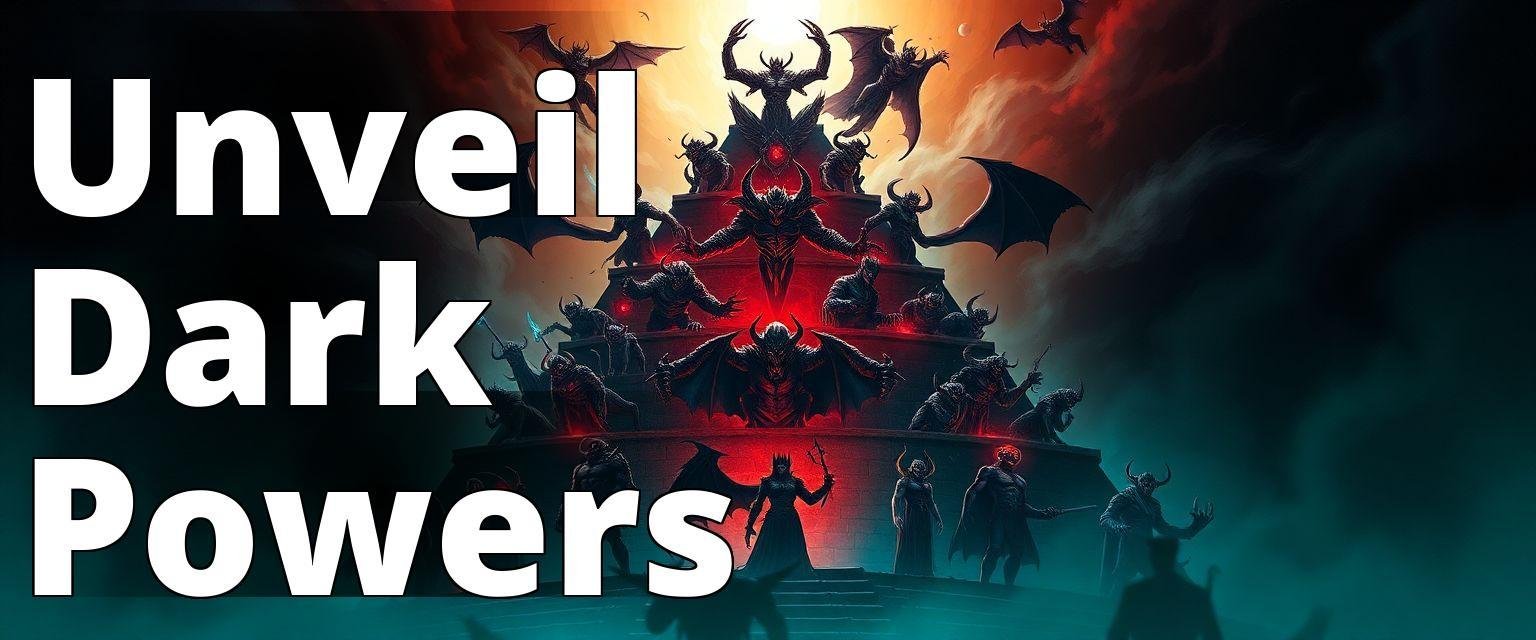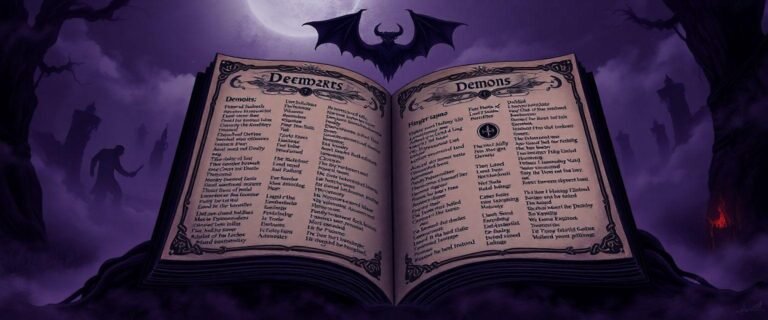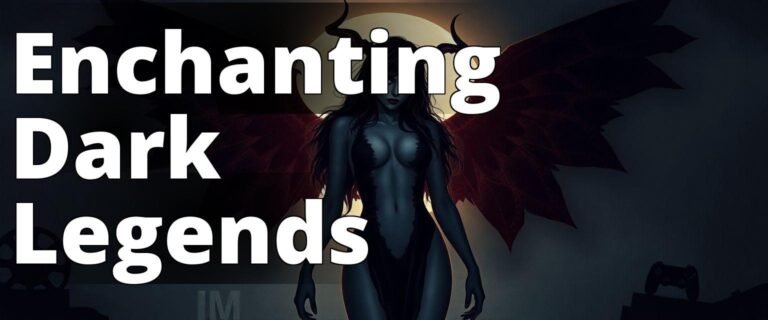The Demon Hierarchy
Have you ever wondered what lies beneath the surface of our world? What if I told you that beneath the facade of our everyday lives, there exists a complex and enigmatic world of demons, each with its rank and role in the infernal realms? The idea of demonic hierarchies is as fascinating as it is terrifying, and today we delve into this intricate web of evil spirits. But before you dismiss this as mere myth, consider thisour understanding of the universe is constantly evolving. What if these ancient beliefs have more truth to them than we think?
Understanding Demonic Hierarchies
Discover the structure and classifications of demons, providing insights into their roles and powers.
– Demonic hierarchies are often organized into levels, with higher-ranking demons possessing greater powers and responsibilities.
– Classes of demons include various types such as archdemons, lesser demons, and specific entities linked to particular vices or elements.
– Each class and hierarchy serves specific functions within mythologies and belief systems, impacting spiritual and cultural narratives.
The Demon Hierarchy
Why do we have hierarchies? Whether in human societies, corporations, or even nature, hierarchies provide structure and order. The same concept applies to the spiritual realm, where demons are believed to be organized in a hierarchical fashion, according to their power and influence. This hierarchy is not just an invention of medieval minds; it is a reflection of historical beliefs that have transcended cultures and eras.
The Origins of Demon Hierarchies
The term “demon” comes from the ancient Greek word “daimon,” which originally meant a spirit or divine power, not necessarily evil. Over time, especially post-Christianity, the term took on a negative connotation, becoming synonymous with malevolent entities. The classification of demons into hierarchies can be traced back to various ancient texts, including the Christian Bible, Jewish folklore, and Islamic teachings, each with its unique take on the organization of these spirits.
In Christianity, the most well-known hierarchy is perhaps that described by Pseudo-Dionysius the Areopagite in the 5th century, which influenced later works, including Dante’s “Divine Comedy.” Similarly, the Jewish Kabbalistic texts provide a complex structure detailing the ranks of evil entities opposing the angelic hosts.
Why Hierarchies Matter
But why do these hierarchies matter? Understanding the structure of demon hierarchies offers insight into how ancient cultures perceived the struggle between good and evil. It reflects the human need to categorize and control the unknown, to make sense of the chaos that evil represents. This organization also highlights the nature of powerhow it is distributed, contested, and maintained.
From a psychological perspective, demon hierarchies can be seen as a metaphor for our inner demons. Each rank represents a different facet of human vice and temptation. Recognizing these can be the first step in confronting and overcoming personal struggles.
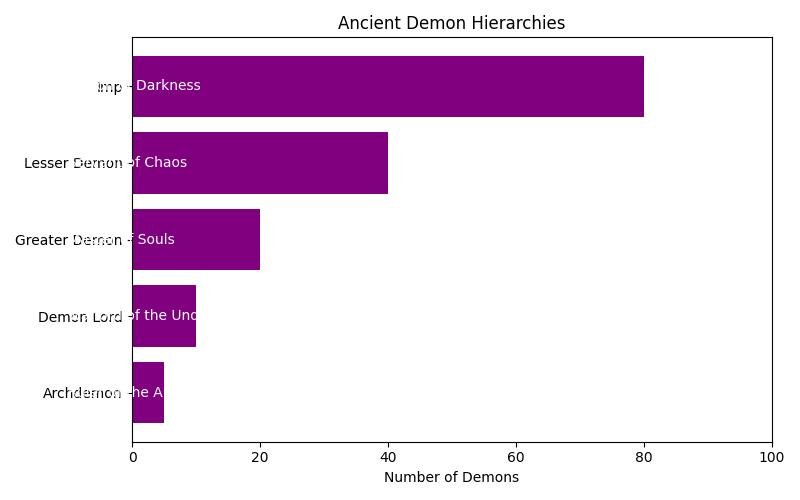
The Structure of the Infernal Realm
The infernal realm is often depicted as a mirror image of the celestial hierarchy, with various classes of demons. At the top, you have the most powerful demons, often referred to as archdemons or princes of hell. These entities are said to wield the greatest influence, commanding legions of lesser demons.
- Archdemons: These are the ruling class, often associated with the seven deadly sins. Each archdemon governs a specific sin, such as Lucifer with pride or Mammon with greed.
- Dukes and Marquis: Below the archdemons are the dukes and marquis, who oversee specific territories or aspects of human vice.
- Soldiers and Minions: The lowest class consists of soldiers or minions, who carry out the commands of their superiors, much like foot soldiers in an army.
This structured hierarchy is not just a relic of medieval imagination. Modern interpretations, such as those in popular culture and literature, continue to draw on these ancient classifications, suggesting an enduring fascination with the concept.
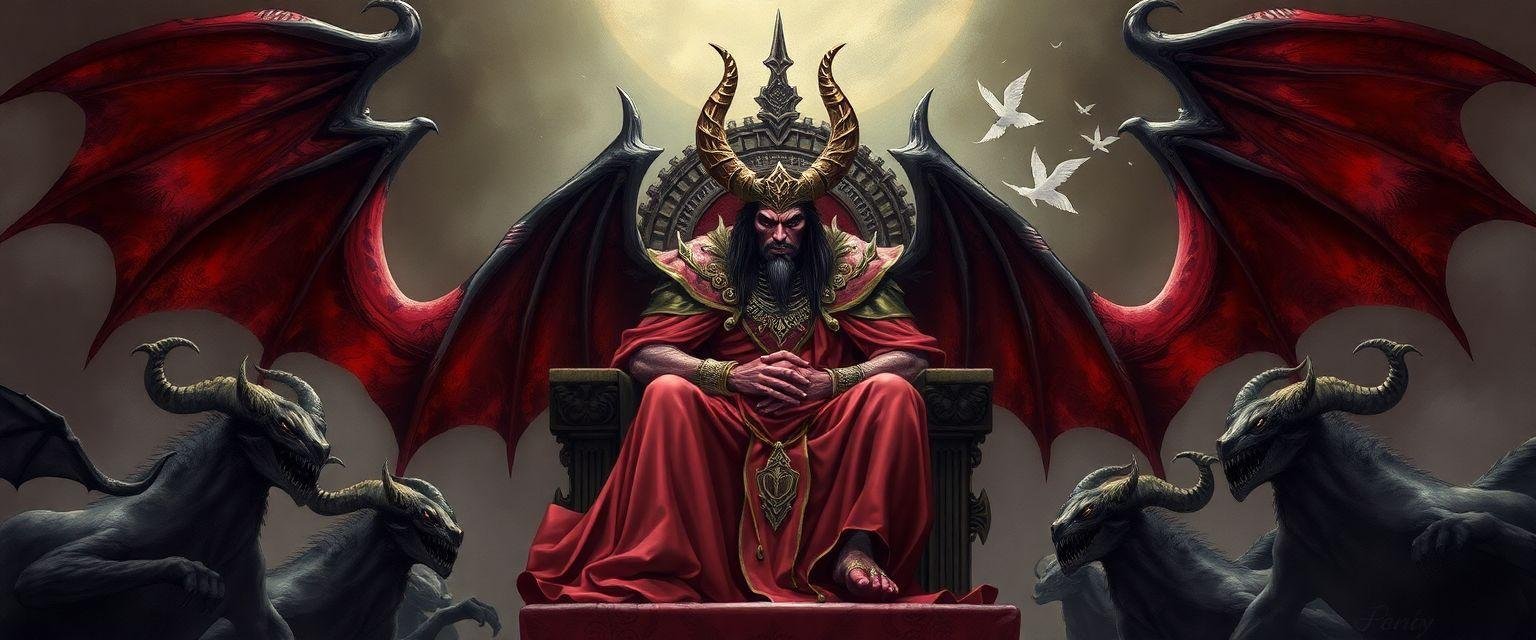
Inside a Demon’s Mind
What makes a demon tick? Is it merely a malevolent desire to cause harm, or is there more to their motivations? Understanding the psychology of demons can be as complex as understanding human nature itself.
Insider Tip: Experts in mythology and psychology suggest that demons are often perceived as external manifestations of internal human struggles. Their hierarchical nature allows us to compartmentalize and tackle different aspects of our psyche.
For instance, the demon Asmodeus, associated with lust, might represent the internal battle with desire and self-control. Recognizing this can help individuals confront these issues in a more structured way.
Real-World Comparisons
Have you ever noticed how organizational structures in the corporate world mirror demon hierarchies? At the top, you have the CEOs and executives, akin to archdemons, followed by department heads, managers, and finally, entry-level employees. This parallel is not coincidental. Both systems reflect a need for order and efficiency in the pursuit of specific goals, whether in business or the orchestration of human downfall.
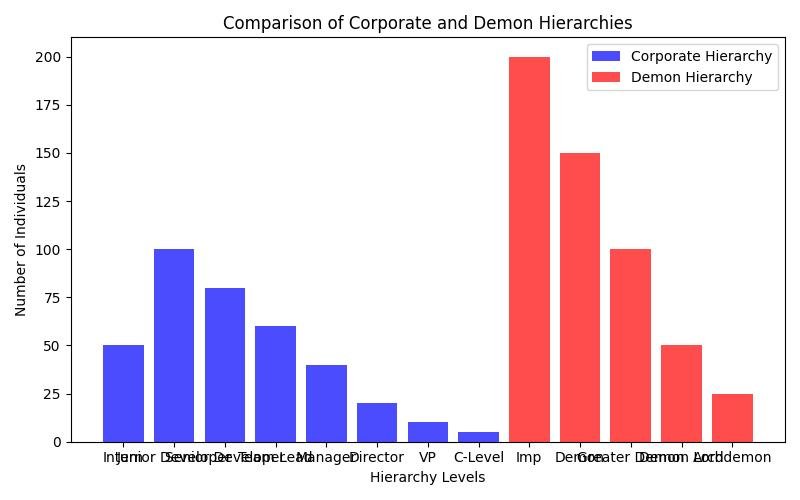
The Role of Demons in Culture and Society
Why are we so fascinated by demons? Throughout history, demons have played a significant role in shaping cultural narratives, from literature and art to religion and folklore. They serve as both cautionary tales and reflections of societal fears and desires.
Demons in Literature
From Dante’s “Inferno” to Milton’s “Paradise Lost,” literature has long been captivated by the idea of demons. These works explore the complexities of sin and redemption, using demons as both antagonists and tragic figures. In doing so, they offer a window into the human soul, highlighting our flaws and the potential for growth and change.
As literary symbols, demons embody the struggle between light and darkness within us all. Their hierarchies serve as a framework for understanding the nuances of this eternal conflict.
Demons in Art
The visual arts have also been deeply influenced by demonic imagery. From the grotesque figures in Hieronymus Bosch’s paintings to the haunting sculptures of Rodin, demons have been used to evoke emotion and provoke thought. They challenge us to confront the darker aspects of existence and question our understanding of morality.

Demons in Modern Media
In today’s world, demons continue to captivate audiences through films, TV shows, and video games. These portrayals often draw on traditional hierarchies, while also introducing new interpretations. They reflect contemporary anxieties, such as the fear of the unknown, the loss of control, and the battle against inner demons.
Insider Tip: A psychologist specializing in media studies notes that our attraction to demonic stories may stem from a desire to explore and understand the darker sides of human nature in a safe and controlled way.
The Scientific Perspective
Is there a scientific basis for belief in demons? While science has yet to provide evidence for the existence of supernatural entities, it does offer insights into why such beliefs persist. Cognitive psychology suggests that our brains are wired to detect patterns and assign agency, leading to the perception of unseen forces at work.
Research on the “god helmet,” a device that stimulates the brain to produce mystical experiences, supports the idea that our minds are predisposed to interpret certain stimuli as supernatural. This innate tendency can explain the universal and enduring nature of demon beliefs.
For further reading, you can explore this study on the psychological basis for supernatural beliefs.
The Future of Demonic Hierarchies
As we move further into the 21st century, what role will demonic hierarchies play in our understanding of the world? Will they continue to serve as metaphors for our inner struggles, or will they evolve into something new?
Demons and Technology
With the rise of artificial intelligence and virtual reality, new forms of “demons” are emerging. These technological entities challenge our perceptions of reality and morality, posing questions about the nature of consciousness and the boundaries of human experience.
Could future technologies give rise to new hierarchies, where digital “demons” exert influence over our lives? The potential implications are both exciting and unsettling, prompting us to reconsider what it means to be human.

Demons and the Environment
In an era of environmental crisis, some theorists suggest that demons could symbolize the destructive forces unleashed by human activity. This interpretation shifts the focus from supernatural entities to the very real consequences of our actions, urging us to confront the “demons” of climate change, pollution, and biodiversity loss.
Insider Tip: An environmental philosopher posits that reimagining demons as natural forces could inspire a deeper connection to the Earth and a greater commitment to sustainable living.
The Enduring Mystery
Despite advances in science and technology, the allure of demonic hierarchies persists. They continue to inspire curiosity and spark debate, challenging us to explore the unknown and question what we think we know.
- Are demons merely figments of our imagination, or do they reflect deeper truths about the human condition?
- How do modern interpretations of demons differ from ancient beliefs, and what does this tell us about our evolving culture?
- Can understanding demonic hierarchies help us navigate the complexities of contemporary life, from personal struggles to global challenges?

Conclusion
In the end, demonic hierarchies are more than just relics of ancient superstition. They are a testament to the enduring power of myth and the complexity of the human psyche. Whether seen as metaphors for our inner demons or reflections of societal fears, they continue to captivate and challenge us, urging us to delve deeper into the mysteries of existence.
As we ponder the role of demons in our lives, we are reminded of the thin line between reality and imagination, order and chaos, good and evil. And perhaps, in exploring these hierarchies, we can gain a better understanding of ourselves and the world around us.
For more on this topic and related discussions, feel free to explore our index of mythological resources.
So, what do you think? Are demonic hierarchies a reflection of our darkest fears, or do they hold the key to unlocking hidden truths? The answer, as always, lies within.
Answers To Common Questions
What are demonic hierarchies and classes?
Demonic hierarchies and classes categorize demons by their power levels.
Who defines the various classes of demons?
Scholars and occultists define the classes based on historical texts.
How do demonic hierarchies impact spiritual practices?
Demonic hierarchies influence rituals and offerings in spiritual practices.
What is the significance of a demon’s class in mythology?
A demon’s class often determines its abilities and role in mythology.
Are all demons considered evil within their hierarchies?
Not all demons are evil; some can represent balance or knowledge.
How can I learn more about demonic hierarchies and classes?
You can explore books, documentaries, and expert lectures on demons.

